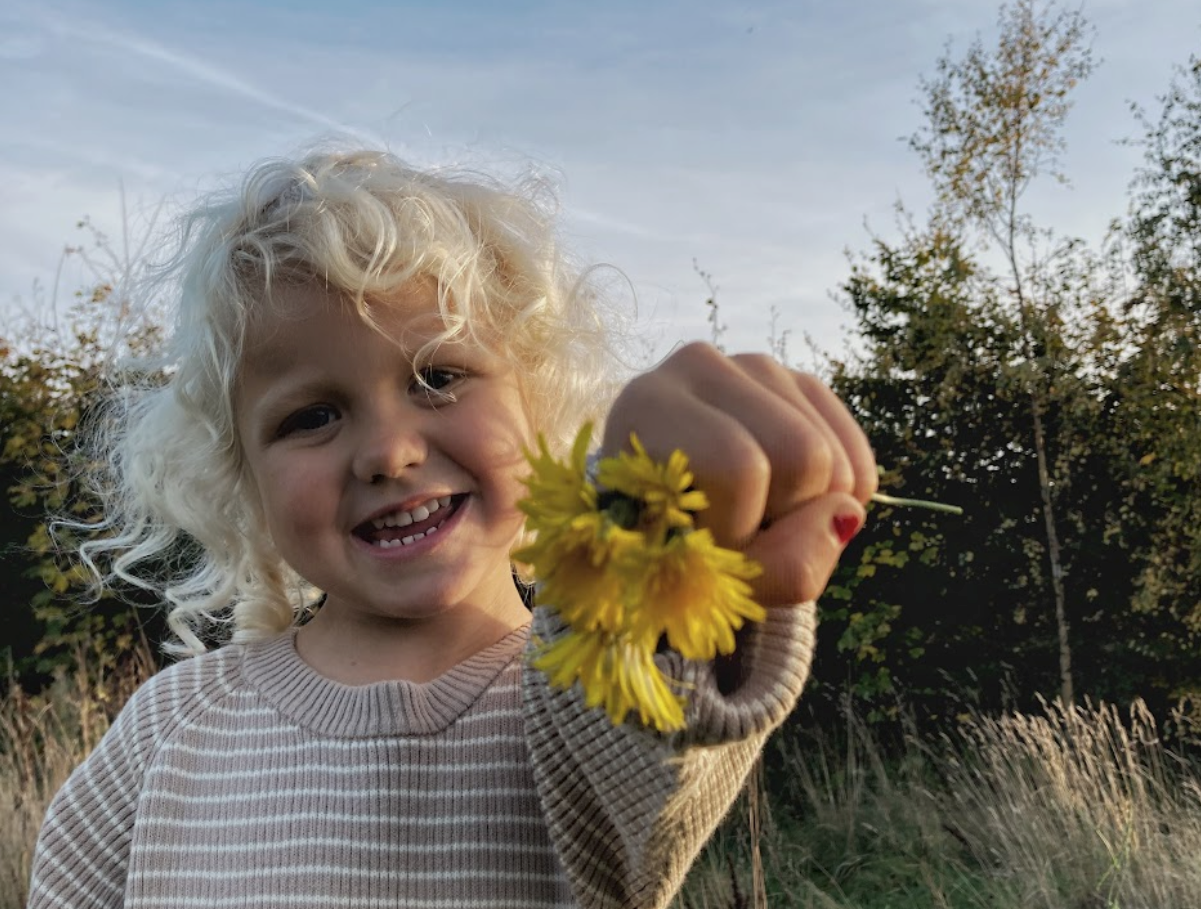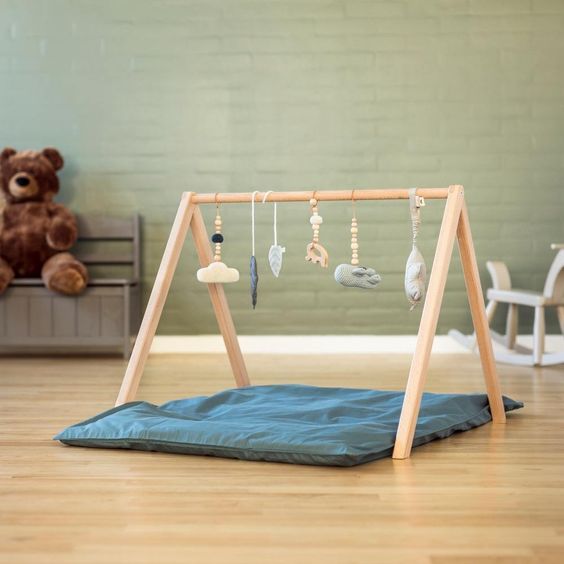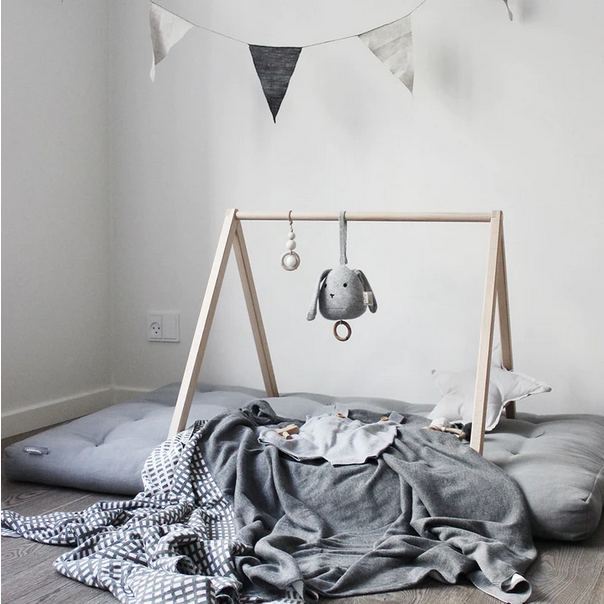Sensory and motor skills are connected. A good sensory integration helps to control the body's movements and a good motor control makes it easier to explore new sensory impressions. Get ideas for good sensory play that strengthens your child's sensorimotor development.

In collaboration with a child occupational therapist Ann Helene Kristensen, we have selected a number of sensory activities that strengthen your child's three body-oriented senses: The sense of touch, the sense of balance and the muscle-joint sense.
Basically, we just want to do well with our children and see them grow up to be happy and healthy people. But there are always at least 700 things that can go wrong - and it's so easy to compare yourself to others. Why can't my child do the same as the other children? Is there something wrong?
Fortunately, the vast majority of worries are unnecessary when it comes down to it. Children are just so different and develop individually. Let go of what your child "should" be able to do. Lower your shoulders and look at your child with friendly eyes. Spend time on games and activities that reinforce the skills your child is learning right now. Then the development mostly comes quite naturally.
Sensory play that strengthens your child's sense of touch
Skin hunger is a thing - also for children. We need to feel each other to feel ourselves. Fortunately, as humans, we are built in such a way that we quite naturally hold babies and toddlers close to us, so that with pure intuition we stimulate the child's sense of touch.
When playing with your baby, you can use different sensory balls and scarves. Or use what you have in the house. Something that is easy to grasp and squeeze. Something that is fun to roll with and crawl after. Something you can bite into or something that tickles the skin.
It is also obvious to think skin-to-skin. Have you tried baby massage? Child occupational therapist Ann Helene Kristensen is a big fan:
"Baby massage is pure love for the tactile sensory system. When we massage, the sense of touch is stimulated and we help our children feel their own limits.”
Imagine a gentle touch from a person you care about. It feels good in the body, doesn't it? This applies to both children and adults. According to Ann Helene, touch triggers security and the well-being hormone oxytocin, which is good for both social and emotional development. So there is good reason to try the baby massage if you haven't been there yet.
Follow child occupational therapist Ann Helene Kristensen's video guide to baby massage:
For slightly bigger tumblers, who have more powder in their ass, the sensory games should be more active - but still with a focus on touch and body contact. It doesn't have to be complicated. Playing with bare toes is a nice stimulation of the sense of touch. A good hug can also be part of the game - and there is even a bonus of the sensory stimulation, which benefits both yourself and your child.
Summary: Activities to stimulate the sense of touch
- Skin-to-skin
- Sensory balls and scarves
- Baby massage
- Play with bare toes
- A good hug
Sensory play that strengthens your child's sense of balance
The sense of balance is constantly at work in both children and adults. It's the one that keeps us upright and doesn't flop around - even when we're moving wildly. If the sense of balance is understimulated, we become, for example, motion sickness or dizzy because the brain simply does not have time to process the amount of stimuli it receives.
In reality, all everyday activities in which we use the body help to stimulate the sense of balance. But if you want to turn up the stimulation a bit, just start spinning, swinging and jumping.
Child occupational therapist Ann Helene Kristensen has been smart and combined the sensorimotor training with a small workout:
"We want children to hang upside down every day, because it provides a sensory experience that is really good for their motor development. The children think it's the laugher and you get to use your upper arms and thigh muscles.”
Get 3 easy exercises that strengthen your own body and your child's vestibular sense at the same time:
Fortunately, stimulating the sense of balance is one of the most enjoyable activities and can easily be integrated into everyday life if you pay attention to it.
Anything that involves spinning or swinging is good. A nice pirouette or a good swing from an adult. It's best when it tickles your stomach a little. Do you remember the feeling of sitting on a swing while an adult twists the swing's rope around and around only to finally let go? Or the sensation of speeding over a hill so that you almost take off and float freely in the air?
The sense of balance is also stimulated by jumping up and down or jumping off something. Or by correcting. When we balance or move on an uneven surface, the body constantly corrects itself so that we do not lose our balance and fall. You can train this by practicing walking on a tightrope or on an obstacle course with different things to climb on and jump off. A catch game with quick changes of direction is also really good.
Ann Helene encourages you to play along when you can:
"When the child engages in dancing, running, jumping and the like, jump along and dance along, because even as adults we benefit from maintaining our sensory system."
Summary: Activities to stimulate the sense of balance
- Spin around itself
- Get a ride from an adult
- Jump on the trampoline
- Climb up and jump down
- Balance without falling
- Play on unstable ground
- Prison game or obstacle course
Sensory play that strengthens your child's muscle-joint sense
Small children, by nature, do not have a particularly well-developed muscle-joint sense. We see it in the lack of body control, which is charming when they are small, but also wants to improve. In many ways, this happens quite naturally through curiosity and play. But all movement counts - and you can easily help.
When your baby is awake, you can advantageously place the child on the stomach - virtually all motor development for babies takes place from this position. Use possibly a play mat that the child can move around on and later learn to crawl from. A good tip is to place toys in a circle around the child - just out of reach. It should probably stimulate curiosity and stimulate the muscle-joint sense.
The Danish Health Authority recommends that children move as much as possible and as freely as possible. It's hard to disagree with. But in a busy everyday life, it's easy to help your children a little more than they really need. Often they can do much more themselves if they are given space and time - and we know that this is the best way to learn new movements and body control. But how do you do just that when everyday life is rushing by and we have to cook pasta and tie shoelaces at the same time?
Here, the Danish Health Authority helps with specifics inspiration for movement for children aged 0-4 years.
Children want to move. Often it is about encouraging movement and giving time for it. For the little ones, anything with repetition is a hit. They learn by imitating. Later it may be more about free movement. It takes longer to get home from kindergarten if you have to jump from tile to tile or balance on the curb. But maybe it's worth the time once in a while?
Summary: Activities to stimulate muscle-joint sense
- Abdominal training on activity blanket
- Repetitions, e.g. clapper cake or angle egg
- Learn through imitation, e.g. jumping, limping or hitting kettlebells
- All movement, e.g. running, jumping, rolling, crawling, crawling, limping, throwing, tilting, jumping, walking, grabbing, spinning, pulling, pushing, swinging, balancing, climbing and swinging
If you want to geek out more with sensorimotor training, child occupational therapist Ann Helene Kristensen is always good for a few concrete suggestions for activities that train both brain and body.
Here she shows how you can use your child's own weight in your strength training exercises at home in the living room. It provides sensorimotor development for your child and strength training for you.



Leave a comment
This site is protected by hCaptcha and the hCaptcha Privacy Policy and Terms of Service apply.